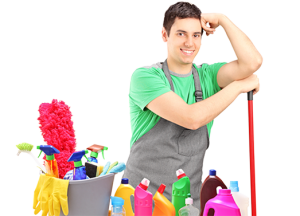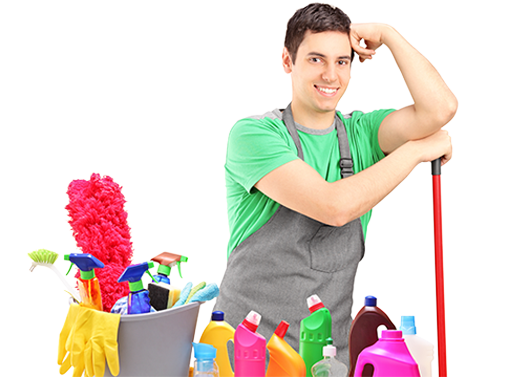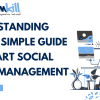Introduction: In the world of cleanliness and hygiene, there’s a lot more to it than just using soap and water. For those of us who are enthusiastic about maintaining a clean and safe lifestyle, understanding the nuances of sanitizing and disinfecting is crucial. To guide us through this complex realm, we turn to the expert
Introduction:
In the world of cleanliness and hygiene, there’s a lot more to it than just using soap and water. For those of us who are enthusiastic about maintaining a clean and safe lifestyle, understanding the nuances of sanitizing and disinfecting is crucial. To guide us through this complex realm, we turn to the expert in the field, Dr. Charles P. Gerba, a renowned microbiologist with over four decades of experience. In this article, we’ll explore the fundamental differences between sanitizing and disinfecting, when and where to use these methods, the science behind disinfection, advanced techniques, and key factors for hygiene enthusiasts.
Sanitize vs. Disinfect
Sanitize: The primary goal of sanitizing is to reduce the number of gems on a surface. It doesn’t eliminate all of them but significantly decreases their population. Sanitizing is effective in low-risk areas, such as your kitchen counter or your hands. It is a common practice to sanitize surfaces or objects that come into contact with food to prevent the spread of bacteria. Sanitizers are designed to work quickly, usually within 30 seconds to 1 minute.
Disinfect: Disinfecting, on the other hand, goes a step further. It aims to eliminate germs entirely. When you disinfect a surface or object, you’re ensuring that no harmful pathogens, including bacteria, viruses, and fungi, are left behind. This method is reserved for high-risk areas, such as bathrooms, hospitals, and any surface frequently touched by multiple people. Disinfectants require more contact time, usually around 5 minutes or more, to work effectively.
Maintaining cleanliness
Kitchen Surfaces: Your kitchen is a breeding ground for bacteria. Countertops, cutting boards, and utensils frequently come into contact with raw food. Sanitizing these surfaces after use can significantly reduce the risk of cross-contamination.
Hand Sanitization: Regular hand sanitizing is especially important, given the number of surfaces your hands touch throughout the day. A good hand sanitizer can reduce the number of germs you might transfer to your face and mouth.
Low-Risk Areas: Sanitizing is suitable for surfaces and objects in areas with lower chances of germ contamination, such as your home office or living room. Regular sanitization can maintain a clean and healthy environment.

image by https://marketingplatform
Science of Disinfection
Chemical Composition: Disinfectants contain stronger active ingredients compared to sanitizers. These chemicals target the cell walls, membranes, or other vital components of microorganisms, rendering them inactive.
Pathogen Elimination: Disinfectants are designed to eliminate a broader spectrum of microorganisms, including bacteria, viruses, and fungi. They are crucial in healthcare settings and high-traffic areas.
Extended Contact Time: Unlike sanitizers, which work quickly, disinfectants require more time to ensure that all germs are eradicated. This contact time is specified on the product label, and it’s essential to follow the instructions for effective disinfection.
Disinfection Techniques
Electrostatic Sprayers: These devices positively charge disinfectant particles, allowing them to adhere better to surfaces. This results in more efficient and uniform coverage, especially on complex or irregularly shaped objects.
UV-C Sterilization: Ultraviolet-C (UV-C) light is an effective tool for disinfection. UV-C light at the right wavelength can inactivate pathogens by disrupting their DNA or RNA, rendering them harmless.
Hydrogen Peroxide Vapor: This method uses hydrogen peroxide in vapor form to disinfect enclosed spaces. It’s a highly effective technique for hospital settings and other critical environments.
Fogging Machines: These devices release a fine mist of disinfectant that reaches into every nook and cranny, making it ideal for large or hard-to-reach areas.

image by https://th.bing.com
Sanitizing vs. Disinfecting
| Aspect | Sanitizing | Disinfecting |
|---|---|---|
| Primary Goal | Reduce Germs | Eliminate germs. |
| Method | Cleaning with sanitizers | Using disinfectants. |
| Effectiveness | Fewer germs remaining | No germs left. |
| Suitable For | Low-risk areas | High-risk areas |
| Frequency | Frequent use | Occasional deep cleaning |
Conclusion:
Sanitizing and disinfecting are not merely a matter of semantics; it’s a fundamental decision when it comes to maintaining a clean and safe environment. This ultimate hygiene guide, led by the expertise of Dr. Charles P. Gerba, has shed light on the essential differences, use cases, and scientific aspects of these practices. We’ve learned that sanitizing is geared toward reducing the number of germs, making it suitable for low-risk areas like your kitchen surfaces or daily hand hygiene. Its effectiveness lies in its ability to quickly diminish the germ population, making it a practical choice for everyday scenarios. On the other hand, disinfecting goes beyond reducing germs; it’s about complete germ elimination. This method is reserved for high-risk areas such as healthcare settings, bathrooms, or surfaces frequently touched by numerous individuals. While disinfectants may require more time to work effectively, they provide a robust defense against a broader range of pathogens. For those who are enthusiastic about maintaining the highest standards of hygiene, advanced techniques like electrostatic sprayers, UV-C sterilization, hydrogen peroxide vapor, and fogging machines are available.























Leave a Comment
Your email address will not be published. Required fields are marked with *